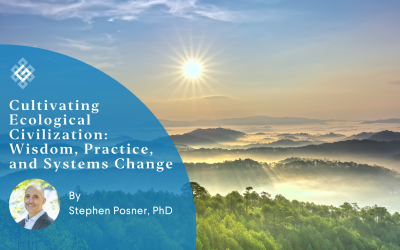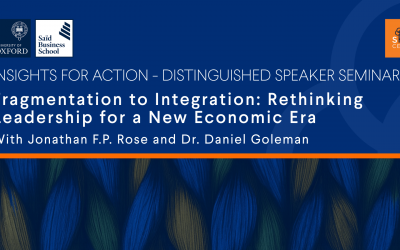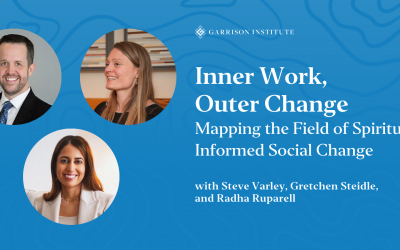As we welcome a new year, it is a great pleasure to introduce myself as the new Director of the CBR Project and update our supporters and alumni at an exciting moment in our history.
As you know, the CBR Project was designed to help aid workers in the field and at headquarters build up skills and practical tools that help them become more resilient to the stresses and strains of their important work.
What you may not know is that in Spring of 2015, the Board of the Garrison Institute approved a proposal to move the CBR Project into a new phase of growth. Based on overwhelming positive feedback from three years of delivering training programs attended by over 100 participants across three continents, the Board agreed that the Pilot Phase of the CBR Project had been a success. As a result, they unanimously approved expanding the program, hiring new leadership and moving into a new phase of growth and scale. The first step in that process was to bring me in from the aid industry as a full-time Director and to hire a Program Associate, Hadley Griffin. (For more on my professional history, click here.)
In this first communication with our growing community of supporters, I want to talk principally about three things:
• Why I couldn’t resist this job
• Results from 2015
• Plans for 2016 and our longer-term ambitions
My Story: Why I Am So Passionate About The CBR Project
I love London. It’s where I grew up and I loved the team I was working with at the Nike Foundation. I was relieved to finally be in touching distance of my friends and family after years working overseas. So when the CBR role came up, I told myself it wasn’t for me. Trouble was, I kept waking up at 2am, turning on the light, picking up a pen and writing things like, “Well I am not going to do the job, but whoever does it needs to think about the following five things…” After two weeks of interrupted sleep, I knew I had to apply and soon after, I had the great fortune of being offered the job and started looking for apartments in New York.
Aid workers who dedicate themselves to humanitarian work know the toll it can take, both mentally and physically. Isolation, distance from family, tough living conditions, insecurity and simple office politics can all create huge stress – and that is before we even consider the effects of witnessing and struggling to respond to the acute humanitarian needs of the populations we are there to serve.
Since 2005, I have been involved in the aid industry including eighteen months in an isolated area of central Democratic Republic of the Congo and over two years living in Haiti after the 2010 earthquake. Throughout that time, in tents, in huts, in bars and in white Land Cruisers bumping along terrible roads, I have heard friends use the catch-all term “burnout” to describe how they often feel. In recent years, a growing body of research about aid worker burnout has emerged providing us with hard data to support what everyone in the industry knew from watching an ever-increasing number of friends and colleagues breaking down, leaving missions, leaving aid organizations and eventually leaving the industry in frustration.
In November 2015, research commissioned by the Guardian newspaper revealed that 79% of aid workers surveyed stated they have experienced mental health issues. What’s more, over 50% had experienced or been diagnosed with anxiety; 44% had suffered with depression; and over 20% cited experiencing panic attacks and post-traumatic stress disorder (PTSD).
I know for myself what it is to burn out. I know what it is to feel inexplicable anxiety, even while safely back home, to feel bouts of depression, to have a panic attack creep up on me in an open-plan office in London and not know how to explain it to friends and colleagues around me. Happily, I also know what it is to come out of those experiences feeling strong and understanding why it happened. For that happy evolution, I have the CBR Project to thank.
Sitting in a trusting environment in a quiet retreat setting during the CBR training in Ireland in 2014, I found myself with other aid workers and talking openly for the first time about what had happened to me after Congo and Haiti. We were guided by the faculty through discussions about the psychology and physiology of chronic stress, and about how normal it is to feel that you are losing empathy, or that you are feeling anxious, depressed and traumatized.
The CBR training for me was a beautiful, cathartic experience in the company of wonderful peers from across a range of aid agencies. Hearing other people’s stories of burnout and recognizing elements of my own was a powerful thing in itself, but importantly, the course moved us beyond our war stories towards positive coping strategies and practical tools to bring back to the field.
It was after the CBR Project that I went to work for Nike Foundation in London and subsequently returned to working for the UN in Nepal after the 2015 earthquakes. Put simply, I benefitted enormously from the CBR Project and I want others in my industry to see the same benefits.
Results from 2015
Along with the decision to hire full-time staff, 2015 was an important year for the program for a number of other reasons. As the culmination of her huge contribution over the last few years, before leaving her role with the CBR Project in the summer of 2015, Teri Sivilli did a huge amount of work with the lead faculty to refine and codify the training curriculum into an invaluable resource. We are so thankful for all Teri brought to the program.
Also in 2015, we were fortunate to add some exciting new faculty, putting in motion the first steps of our plans to move to greater scale. Chia-Ti Chiu and Ola Witkowska join our existing faculty, which will continue to grow as we expand our training programs. Finally, the incoming team ran a four day training for 25 people in New York in November which you can read about here.
Plans for 2016 and Call to Action
As we look at the year ahead, the possibilities for the CBR Project are incredibly exciting. After a successful Pilot Phase over the past three years, the Board have been very clear in supporting an ambitious agenda to move the CBR Project to a new scale. The benefits of the training program are clear. Our plan now is to grow and to focus efforts in three ways:
1) Expand and deepen our relationships with progressive aid agencies who recognize their staff need more support;
2) Grow our voice as advocates for more focus on mental health and promote the transformative effects of the contemplative tools of mindful movement and meditation;
3) Fund our work by expanding our donor base to include more institutional donors as well as more support from individual giving.
Anyone who receives our Newsletter I consider to be one of our core supporters. At this point in our growth, you are part of a relatively small club (a PR man might say ‘highly exclusive…’), so you will be able to say you were with us from the very start of this journey. If you can offer us support this year to achieve our goals – whether that support is financial, or through helping us build key relationships – please know that we are grateful for any help you offer. I am always available, so drop me a line with any thoughts on emmett@garrisoninstitute.org
As an industry, we can do so much better looking after the mental health of our people. We can and we must create a more resilient cohort of happier, healthier aid workers to continue their amazing work.
I feel incredibly privileged to be at the head of the CBR Project as we grow and do our part to contribute to the industry’s transformation. Here’s to an exciting journey ahead in 2016 and beyond.
Emmett



